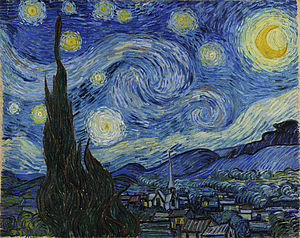“It is absolutely certain that I shall never do important things.”
-Vincent Van Gogh, two months before his suicide.
Though the tormented life of Vincent van Gogh can be interpreted in many ways, I’d like to paint it today as a parable: Accurately evaluating what you’ve created is a difficulty all its own.
The starry night is widely regarded as Van Gogh’s magnum opus, yet Van Gogh himself was not impressed with it. A short while after painting it he sent it and a few other paintings to his brother Theo along with a letter.
The paintings were separated into two categories, four studies (something done for practice) and four works Van Gogh considered more complete. Starry night, was first called by van Gogh, “Study of the night.” He said of these paintings:
In all this batch I think nothing at all good save the field of wheat, the mountain, the orchard, the olives with the blue hills and the portrait and the entrance to the Quarry, and the rest says nothing to me, because it lacks individual intention and feeling in the lines
In other words, he did not consider his magnum opus at all good. One problem in judging one’s own work is the intimacy you have with it, that intimacy that no one else will have on first viewing.
We become blinded by our singular perspective resulting from our immersion in our own work. In other words, other people do not share the long history of your creative efforts — they are examining your creation in a more objective context.
The moral is not that we must rudder our ship based on popular opinion but that we must admit that our evaluations of our own work can become colored and disengaged from the perception of others.
What is also interesting is that just from reading a single letter from van Gogh to his brother you get a sense of his tireless work ethic and his passion for his craft:
I have now seven copies out of the ten of Millet’s “Travaux des Champs.” I can assure you that making copies interests me enormously, and it means that I shall not lose sight of the figure, even though I have no models at the moment.
[...]
I should also like to copy the sower and the diggers.
[...]
I am going to copy the Good Samaritan by Delacroix too.
[...]
Many people do not copy, many others do – I started on it accidentally, and I find that it teaches me, and above all it sometimes consoles me.
[...]
When you say in your letter that I have done nothing but work, no – that is not right. I am myself very, very dissatisfied with my work, and the only thing that comforts me is that people with experience say you must paint for ten years for nothing. But what I have done is only those ten years of miserable and unwelcomed studies. Now a better period may come, but I shall have to get the figure stronger and I must refresh my memory by a very close study of Delacroix and Millet. Then I shall try to get my drawing clearer. Yes, misfortune is good for something, you gain time for study. I am adding to the roll of canvases a study of flowers – nothing much, but after all I do not want to tear it up.
The other moral we already know; producing great things is lubricated by mastery achieved through consistent deliberate practice.
